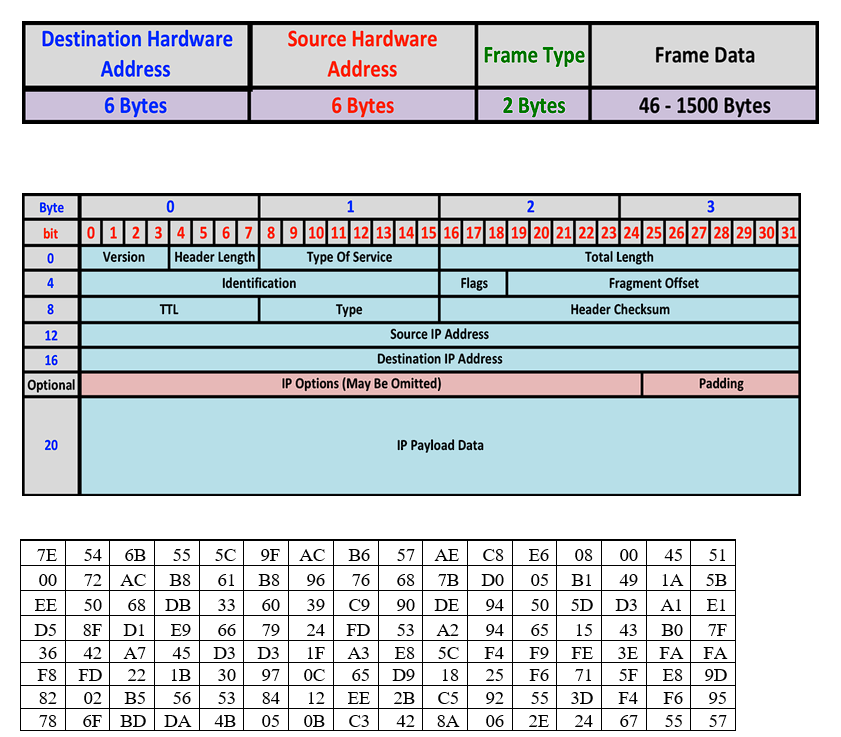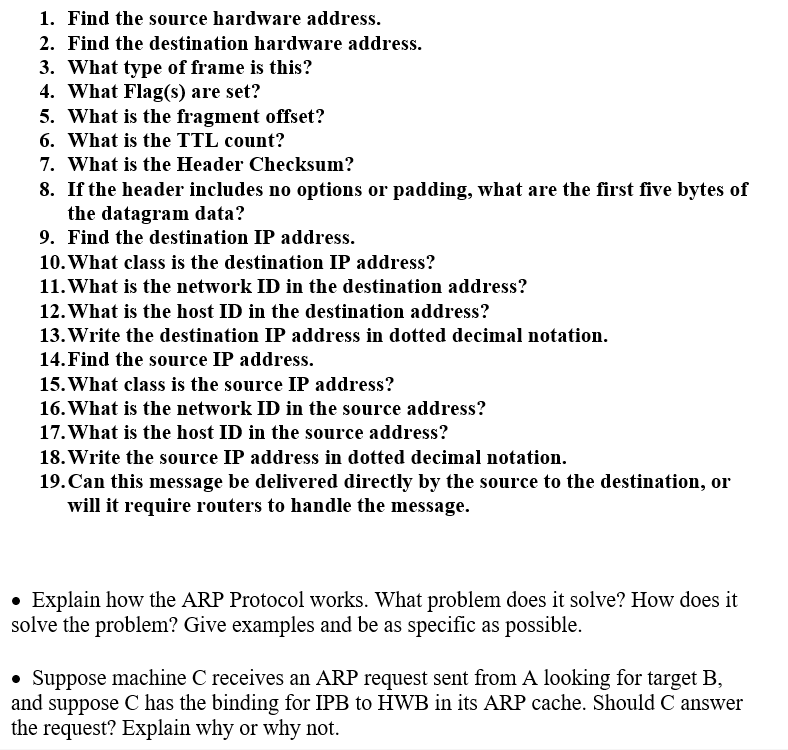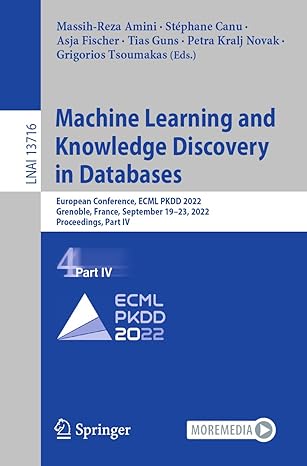

\begin{tabular}{|c|c|c|c|} \hline DestinationHardwareAddress & SourceHardwareAddress & Frame Type & Frame Data \\ \hline 6 Bytes & 6 Bytes & 2 Bytes & 461500 Bytes \\ \hline \end{tabular} \begin{tabular}{|r|r|r|r|r|r|r|r|r|r|r|r|r|r|r|r|} \hline 7E & 54 & 6B & 55 & 5C & 9F & AC & B6 & 57 & AE & C8 & E6 & 08 & 00 & 45 & 51 \\ \hline 00 & 72 & AC & B8 & 61 & B8 & 96 & 76 & 68 & 7B & D0 & 05 & B1 & 49 & 1A & 5B \\ \hline EE & 50 & 68 & DB & 33 & 60 & 39 & C9 & 90 & DE & 94 & 50 & 5D & D3 & A1 & E1 \\ \hline D5 & 8F & D1 & E9 & 66 & 79 & 24 & FD & 53 & A2 & 94 & 65 & 15 & 43 & B0 & 7F \\ \hline 36 & 42 & A7 & 45 & D3 & D3 & 1F & A3 & E8 & 5C & F4 & F9 & FE & 3E & FA & FA \\ \hline F & FD & 22 & 1B & 30 & 97 & 0C & 65 & D9 & 18 & 25 & F6 & 71 & 5F & E8 & 9D \\ \hline 82 & 02 & B5 & 56 & 53 & 84 & 12 & EE & 2B & C5 & 92 & 55 & 3D & F4 & F6 & 95 \\ \hline 78 & 6F & BD & DA & 4B & 05 & 0B & C3 & 42 & 8A & 06 & 2E & 24 & 67 & 55 & 57 \\ \hline \end{tabular} 1. Find the source hardware address. 2. Find the destination hardware address. 3. What type of frame is this? 4. What Flag(s) are set? 5. What is the fragment offset? 6. What is the TTL count? 7. What is the Header Checksum? 8. If the header includes no options or padding, what are the first five bytes of the datagram data? 9. Find the destination IP address. 10. What class is the destination IP address? 11. What is the network ID in the destination address? 12. What is the host ID in the destination address? 13. Write the destination IP address in dotted decimal notation. 14. Find the source IP address. 15. What class is the source IP address? 16. What is the network ID in the source address? 17. What is the host ID in the source address? 18. Write the source IP address in dotted decimal notation. 19. Can this message be delivered directly by the source to the destination, or will it require routers to handle the message. - Explain how the ARP Protocol works. What problem does it solve? How does it solve the problem? Give examples and be as specific as possible. - Suppose machine C receives an ARP request sent from A looking for target B, and suppose C has the binding for IPB to HWB in its ARP cache. Should C answer the request? Explain why or why not. \begin{tabular}{|c|c|c|c|} \hline DestinationHardwareAddress & SourceHardwareAddress & Frame Type & Frame Data \\ \hline 6 Bytes & 6 Bytes & 2 Bytes & 461500 Bytes \\ \hline \end{tabular} \begin{tabular}{|r|r|r|r|r|r|r|r|r|r|r|r|r|r|r|r|} \hline 7E & 54 & 6B & 55 & 5C & 9F & AC & B6 & 57 & AE & C8 & E6 & 08 & 00 & 45 & 51 \\ \hline 00 & 72 & AC & B8 & 61 & B8 & 96 & 76 & 68 & 7B & D0 & 05 & B1 & 49 & 1A & 5B \\ \hline EE & 50 & 68 & DB & 33 & 60 & 39 & C9 & 90 & DE & 94 & 50 & 5D & D3 & A1 & E1 \\ \hline D5 & 8F & D1 & E9 & 66 & 79 & 24 & FD & 53 & A2 & 94 & 65 & 15 & 43 & B0 & 7F \\ \hline 36 & 42 & A7 & 45 & D3 & D3 & 1F & A3 & E8 & 5C & F4 & F9 & FE & 3E & FA & FA \\ \hline F & FD & 22 & 1B & 30 & 97 & 0C & 65 & D9 & 18 & 25 & F6 & 71 & 5F & E8 & 9D \\ \hline 82 & 02 & B5 & 56 & 53 & 84 & 12 & EE & 2B & C5 & 92 & 55 & 3D & F4 & F6 & 95 \\ \hline 78 & 6F & BD & DA & 4B & 05 & 0B & C3 & 42 & 8A & 06 & 2E & 24 & 67 & 55 & 57 \\ \hline \end{tabular} 1. Find the source hardware address. 2. Find the destination hardware address. 3. What type of frame is this? 4. What Flag(s) are set? 5. What is the fragment offset? 6. What is the TTL count? 7. What is the Header Checksum? 8. If the header includes no options or padding, what are the first five bytes of the datagram data? 9. Find the destination IP address. 10. What class is the destination IP address? 11. What is the network ID in the destination address? 12. What is the host ID in the destination address? 13. Write the destination IP address in dotted decimal notation. 14. Find the source IP address. 15. What class is the source IP address? 16. What is the network ID in the source address? 17. What is the host ID in the source address? 18. Write the source IP address in dotted decimal notation. 19. Can this message be delivered directly by the source to the destination, or will it require routers to handle the message. - Explain how the ARP Protocol works. What problem does it solve? How does it solve the problem? Give examples and be as specific as possible. - Suppose machine C receives an ARP request sent from A looking for target B, and suppose C has the binding for IPB to HWB in its ARP cache. Should C answer the request? Explain why or why not








